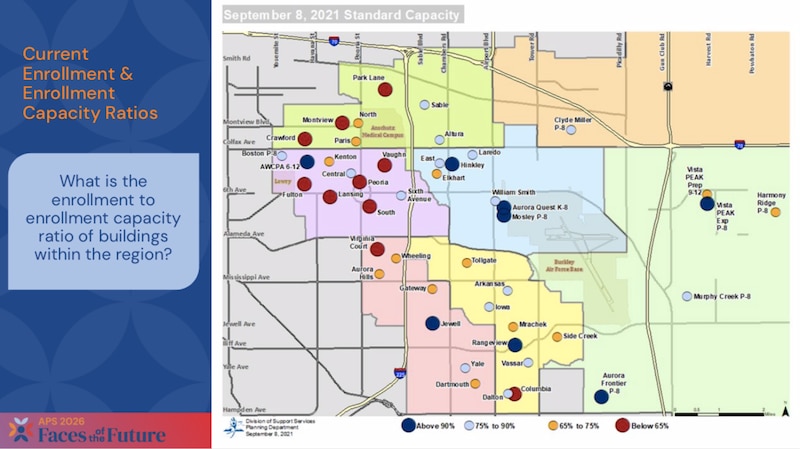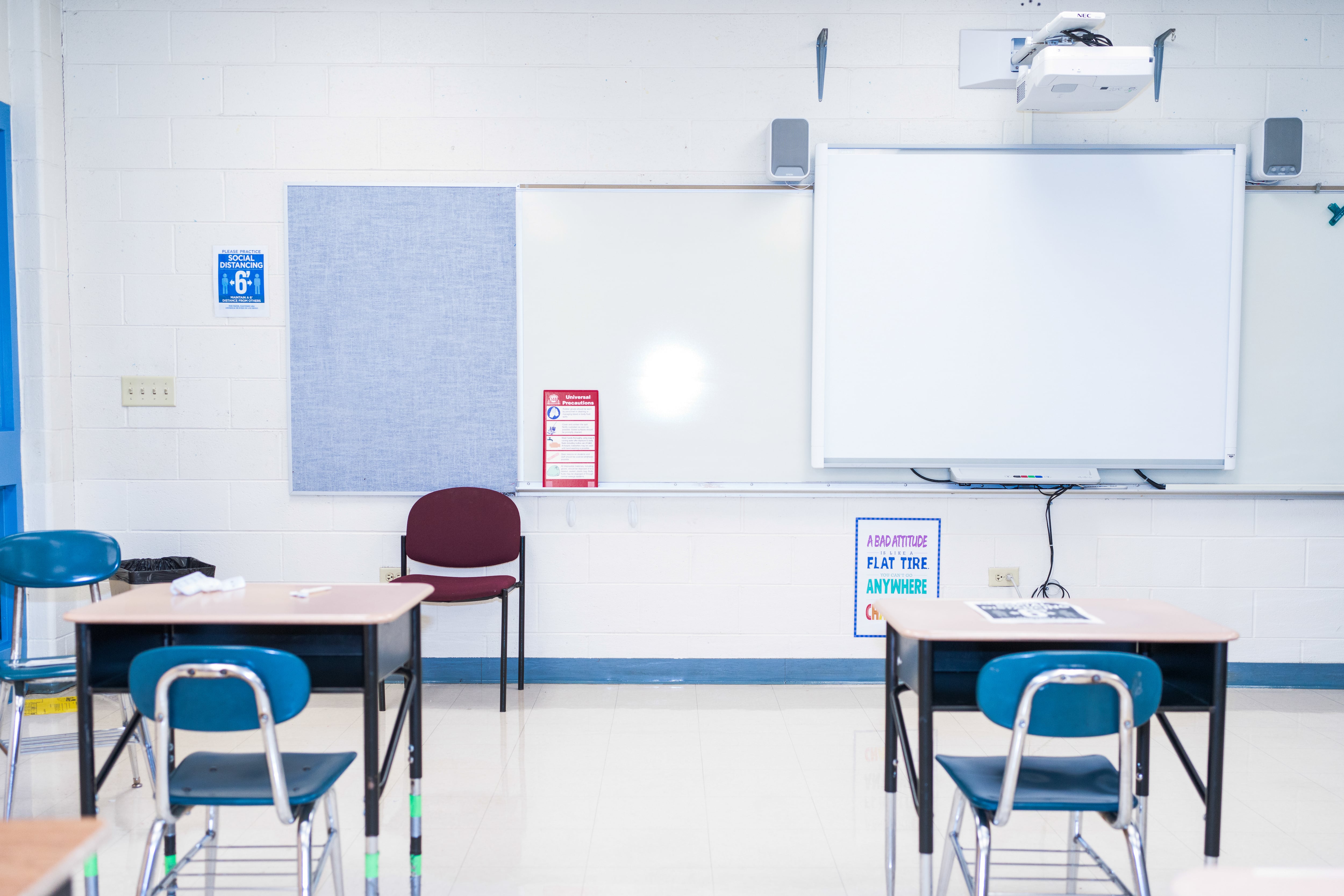The Aurora school district may close more schools this year, turning its focus to its northern section, as ongoing enrollment declines leave more schools well below capacity.
The district hasn’t decided how many or which schools will close this time. Last year the board decided to close two schools and phase out two more, among other changes. On Tuesday night, Aurora’s superintendent told the school board that planners next will target two regions on opposite sides of the district with different enrollment trends.
Schools will likely close or could be consolidated in Region 1 in the northern part of the district. That area, including schools near the Anschutz Medical Campus, has experienced rapid enrollment decline. It covers an area where poverty affects a majority of students. Several schools have more than 90% of their students qualifying for subsidized lunches.
Region 5, which includes the southern part of Buckley Space Force Base and formerly empty areas to the east of E-470, is seeing rapid housing development, which will require new schools.
Schools that may be considered for repurposing or closing are Crawford, Paris, and Park Lane elementary schools and North Middle School.
All were already listed on the district’s 2019 list as candidates for closure or repurposing.
Superintendent Rico Munn emphasized the district has not made final decisions yet.
“This is directional not decisional,” Munn said Tuesday. “We’re trying to be transparent in our thinking, in our work.”
Besides school closure, repurposing may mean reconfiguring the grade levels of a school, or turning it into a magnet program focused on the specializations identified in each region.
Updated enrollment numbers, also presented Tuesday, show that enrollment this year declined again from pre-pandemic years, but not by as much as expected.
Still, Munn said, the district now has 10 schools below 65% capacity, compared with two a few years ago.
Park Lane Elementary, with about 230 students, uses the smallest portion of its building, occupying just 49% of capacity.
Last year, as part of the same long-term facilities plan called Blueprint APS, the school board approved plans to close schools, turn others into magnet programs, and temporarily use some buildings for other purposes in Regions 2, 3, and 6. Plans are still being rolled out.
For instance, the district is designing a new arts-focused magnet campus to open at Peoria and Aurora Central next year. Lynn Knoll Elementary was closed, but is being demolished and rebuilt and will reopen in 2023 as a K-8.
Now the district is planning to conduct a facility analysis for the regions it’s targeting next, and will re-engage previous regional community groups to craft recommendations.
In Region 5, rather than looking at schools to repurpose, the district will try to identify where it might build a new school and is asking the community about priorities for a new building.
School board members asked about plans to engage the community. Board members have often cited concerns that people are not aware of district plans.
Munn described various tactics the district is using to engage the community, including reaching out directly to influencers in the district’s large refugee community. He also said that outreach will continue to be a challenge.
“The process has been going on long enough where people are not necessarily always plugged in, and there is also enough transition in the district from students and also families and staff that they’re not aware of some of the work that has happened in the past,” Munn said.
He plans to present recommendations to the school board in January, meaning new school board members elected in November will face the vote on school closures in their first months in the role.






